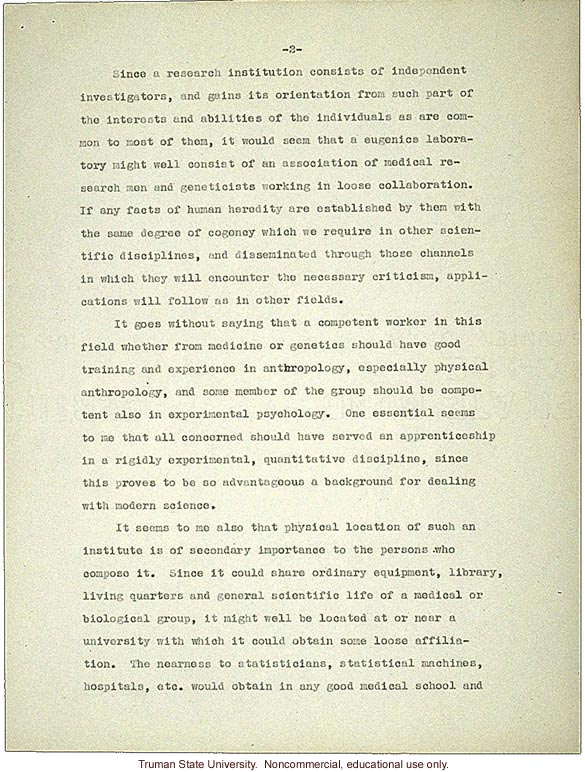-2-
Since a research institution consists of independent investigators, and gains its orientation from such part of the interests and abilities of the individuals as are common to most of them, it would seem that a eugenics laboratory might well consist of an association of medical research men and geneticists working in loose collaboration. If any facts of human heredity are established by them with the same degree of cogency which we require in other scientific disciplines, and disseminated through these channels in which they will encounter the necessary criticism, applications will follow as in other fields.
It goes without saying that a competent worker in this field whether from medicine or genetics should have good training and experience in anthropology, especially physical anthropology, and some member of the group should be competent also in experimental psychology. One essential seems to me that all concerned should have served an apprenticeship in a rigidly experimental, quantitative discipline, since this proves to be so advantageous a background for dealing with modern science.
It seems to me also that physical location of such an institute is of secondary importance to the persons who compose it. Since it could share equipment, library, living quarters and general scientific life of a medical or biological group, it might well be located at or near a university with which it could obtain some loose affiliation. The nearness to statisticians, statistical machines, hospitals, etc. would obtain in any good medical school and


